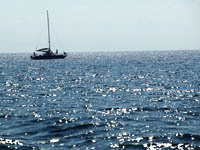Sunken islands of Gondwana supercontinent found in Indian Ocean
 Researchers discovered two sunken islands on the floor of the Indian Ocean. Supposedly, the islands used to be a part of the supercontinent of Gondwana. The islands represent the last link that connected India and Australia, The Moskovsky Komsomolets newspaper wrote. The prehistoric islands rest at the depth of 1.5 kilometers near Western Australia.
Researchers discovered two sunken islands on the floor of the Indian Ocean. Supposedly, the islands used to be a part of the supercontinent of Gondwana. The islands represent the last link that connected India and Australia, The Moskovsky Komsomolets newspaper wrote. The prehistoric islands rest at the depth of 1.5 kilometers near Western Australia.
The scientists made the discovery while mapping the seafloor of the Perth Abyssal Plain, Fox News said.
"The data collected on the voyage could significantly change our understanding of the way in which India, Australia and Antarctica broke off from Gondwana," University of Sydney geologist Dr. Joanne Whittaker said.
The islands were formed when India started to move away from Australia. The split took place some 130 million years ago, during the Cretaceous period.
The scientists came to this conclusion when they lifted nearly 100 kilos of rocks to the surface. They expected to see common oceanic rocks such as touchstone. Instead, the researchers found continent-like rocks consisting of granite, gneiss and sandstone. The recovered rocks also contained fragments of fossilized terrestrial animals and plants.
The sunken islands have flat heights, which means that they used to be above the sea level and gradually submerged into the water, ITAR-TASS reports.
Gondwana used to be a half of all land on Earth. The movement of continents that split from Gondwana and their collision with the parts of Laurasia, another supercontinent, resulted in the active formation of mountains. For example, the Alps appeared when Africa was pressing against Europe. The collision of India and Asia created the Himalayas.
Subscribe to Pravda.Ru Telegram channel, Facebook, RSS!





